When organizing a working group meeting, you may decide that part of the reason for gathering is to collect input and expertise from your members. Remember that giving your participants something to DO is a powerful way to engage them and give them purpose, so don’t hold back. Then, focus on giving your conversation structure so that you can manage the loud voices and democratize the input.
Read MoreWorking groups are a particularly challenging group to organize and facilitate. Members typically participate in a working group as volunteers, or as an “add on” to their day-to-day jobs. They’re usually made up of members who are more experienced and senior than the person charged with spearheading the group, and the lack of power structure makes accountability to the group a bit thin.
Read MoreA key hurdle for leaders stepping into their own leadership is their personal belief that they’re not ready. This article explores Impostor Syndrome, who it affects, and how to combat it effectively: check in with yourself, reframe your thinking, seek outside perspectives, and take a small step.
Read MoreEvery month we host an Ask Me Anything forum where people bring their burning questions about meeting design or facilitation. More often than not, the questions we get can be summed up as, “Why is the meeting so boring? I feel like I’m pulling teeth trying to get people to engage. It just feels like a waste of time.” If you’re in a position where it feels like everything is bad about one of your critical business meetings, start by tackling the agenda.
Read More“Employee engagement” has been a hot-button issue for more than a decade, and remains central to organizational strategy. But engagement is even more important now as companies experiment with hybrid work, or a permanent virtual workforce, and the Great Resignation exists as an ever-present backdrop. And yet, “engagement” remains a big-picture, intangible, and somewhat esoteric idea that has lots of impact on the people within an organization without anyone really understanding what to do about it.
The truth of the matter is that truly engaging your team happens long before the actual moment of reckoning. It’s thinking through details, and finding ways to activate interest and ownership with your employees in every interaction. Here are three common myths about employee engagement and what you can do instead.
Read MoreIf the COVID-19 pandemic taught us anything, it was that we can engage with each other even if we’re all in different places. As the world re-opens and in-person conferences are restarting, there is an expectation that they will remain accessible to folks who are unable to participate on site. And yet, early attempts to build meaningful hybrid conference experiences have shown us that we’re playing in a whole new league now. Hybrid experiences aren’t in-person or virtual experiences. They’re something altogether different. We still have a lot to learn, and it’s easy to execute hybrid conferences poorly.
Read MoreA common question we hear from folks preparing for a “big” meeting is, “How do I handle the person who always dominates the conversation?” There are several strategies you can use to make sure the dominant voice is productive, and doesn’t prevent other voices from being heard, derail your meeting flow, or interfere with your goals. Here are three…
Read MoreWe’re making plans in an era of uncertainty. These things are going to keep happening. It’s not clear if we’ll ever again get to a point where we can guarantee that an in-person event will definitely be in person, or that the keynote speaker we were planning on doesn’t suddenly develop the sniffles and will now give her speech from a virtual podium instead of the stage. Because of our new reality, here are a few recommendations on how to be proactive in your leadership and team meeting planning.
Read MoreAs a business, we had zero in-person events scheduled between March 2020 and June 2021. As we became vaccinated against COVID-19, and many in the community became protected as well, we started hearing from clients that were hopeful and interested in gathering in-person, while still taking precautions to mitigate the virus's spread.
So, we're leading events again, and often, our hosts are asking attendees and facilitators to mask up. Since June, we’ve had the opportunity to lead our Influential Storytelling workshop in-person several times, and many of those times we facilitated while wearing a mask. Along the way, we’ve learned a thing or two about how to facilitate or present with a mask on; what to pay attention to, what to keep in mind, and best practices to take to heart.
Here are a few of our learnings.
Read MoreOver the past several weeks, we posted a series of articles that walk you step by step through planning and facilitating the best strategy retreat of your career. Each week, we focused on one critical piece of the process we follow with our clients to ensure they design their meetings effectively and facilitate them for success.
>> Part 1: Define Success
>> Part 2: Develop a Straw Man Agenda
>> Part 3: Design Your Activities to Engage Your Attendees
>> Part 4: Navigate Day-of Challenges
Read MoreIt’s showtime! You’ve defined success, prepared a straw model agenda, and then refined that agenda for engagement. You’ve done the work to intentionally set up your meeting for success, but there are some things you just can’t do in advance. Here are some tips to help you navigate (and avoid!) day-of challenges that may arise.
>> Keep the Meeting on Track
>> Address Last Minute Attendance Changes Productively
>> Handle Low-Energy Moments
Read MoreNow it’s time to roll up your sleeves and prepare to get a little dirty. This is where it gets incredibly messy before you clean it up. Think about the journey your participants need to go on over the course of the retreat, and build out a row in your table for each step of that journey. Determine what they need to KNOW, FEEL, and DO first, second, third, and so on. Each row will be its own experience or agenda item, and each should have it’s own distinct purpose. Then, as best as you can, fill out the rest of your table to create your straw man agenda.
Read MoreBottom-lining is one of the most effective ways that a facilitator can keep the conversation on task, redirect tangents, stick to agenda and time, and engage participants. If you have a particularly chatty participant, asking them to bottom-line their contribution helps them cut out the unnecessary storytelling and asides. If you or others in the meeting have trouble understanding a participant’s point, asking them to bottom-line will help clarify what their message is. And as a facilitator, by reiterating what you hear a participant say as a single, succinct bottom line will help verify that you (and others in the room) are interpreting things correctly.
Read MoreHer plan was to pose some questions to the group, and then have a discussion about each one. Stephanie immediately asked her if there would be any implicit or explicit power dynamics in the room, and whether any person in the group was considerably more extroverted than the others.
You see, her big challenge wasn’t identifying the right question to ask. She had good, open-ended questions that were straightforward enough and easy to understand (although hard to answer). Her challenge was making sure that the ideas that surfaced were all given a fair shake, that no one voice dominated the conversation, and that her process guaranteed the best ideas would bubble to the top.
Here are some fun tricks we recommended to her that day, and ones you can consider for your own meetings…
Read MoreOur partnership is the foundation of our business. It shapes our work, how we show up for our clients, how we run meetings and what we put out into the world. Leaders watch our partnership in action and notice the trust, honesty, and candor between us and how that creates the space for both of us to be the best versions of ourselves. “How do we do that?” they ask. “What’s the secret?”
The answer lies in two important qualities of how we work together, and these qualities are transferable to any meeting you may have at work. If done well, over time they’ll manifest incredible trust and candor within your team.
Read MoreWhen you gather your team for a weekly alignment session, stand up to give a presentation to your board, or plan a conference… No matter how big or small or mundane your meeting is, your attendees arrive with a set of expectations, assumptions, and preconceived notions.
The first 3-5 minutes of your meeting are your opportunity to make sure all those expectations and assumptions are aligned across the group, and folks are motivated to participate. You can do a lot in a few minutes; aim to establish operating norms or ground rules, share the agenda, and perhaps most importantly of all, set the tone. It’s in these 3-5 minutes that your attendees will make a decision about how much or little they will engage as participants and it’s your job to invite them in properly.
Read More















